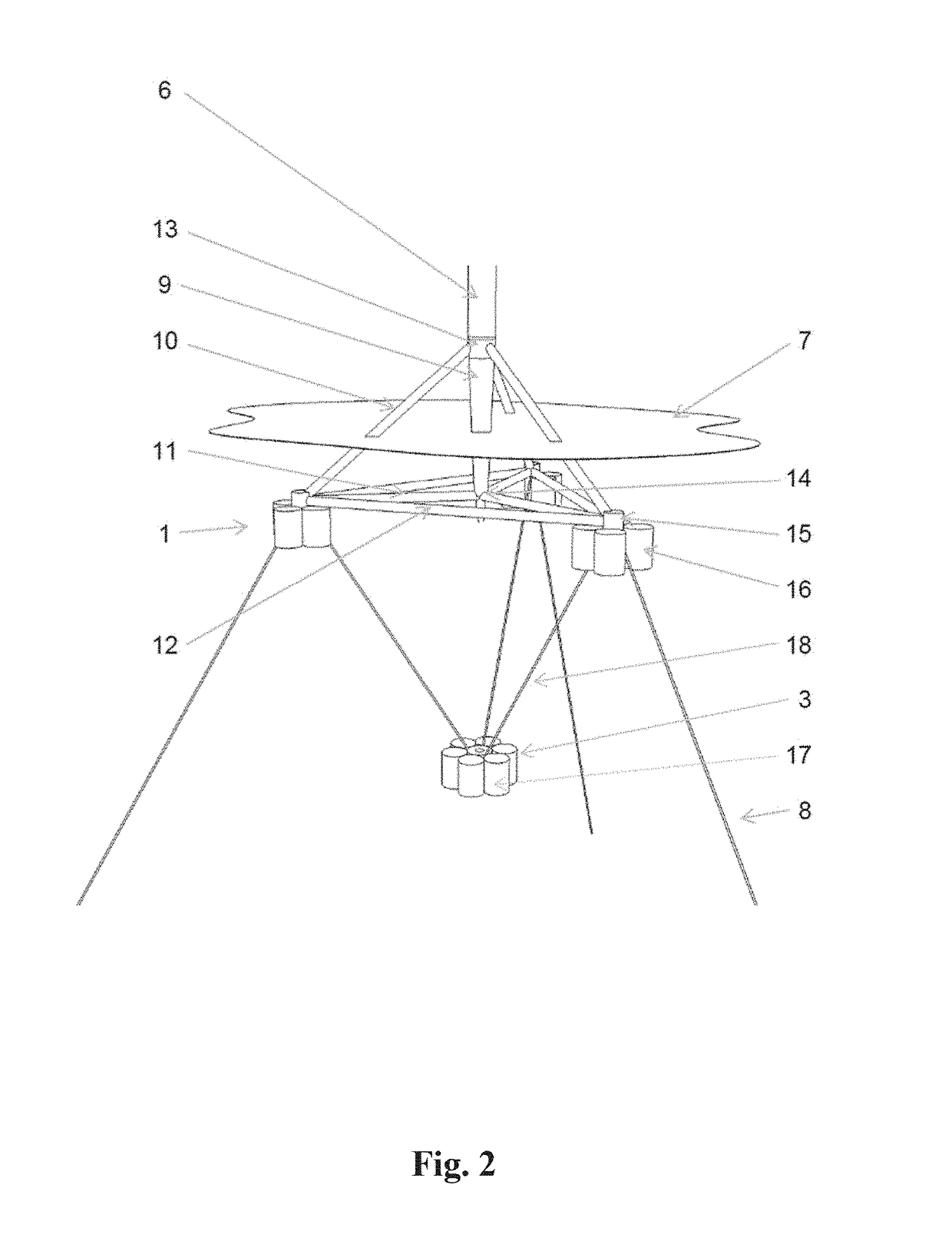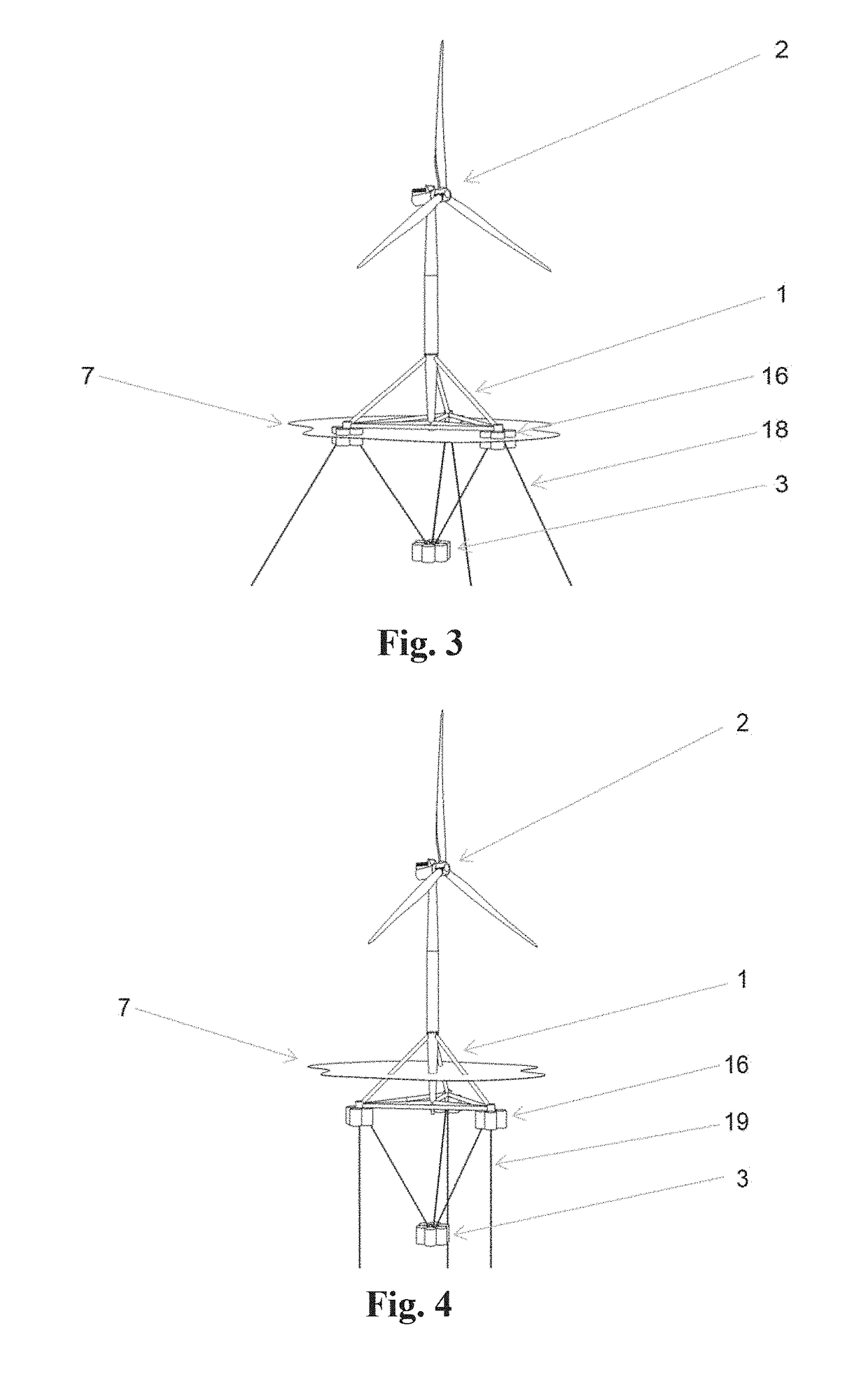A floating wind turbine and a method for the installation of such floating wind turbine
a technology of floating wind turbines and wind turbines, which is applied in the direction of wind energy generation, vessel construction, anchoring arrangements, etc., can solve the problems of insufficient suitable offshore areas with water depths of 50 m or less, insufficient sheltered waters with sufficient depth, and inability to deploy offshore wind power, etc., to achieve effective installation arrangements of tlps, reduce tether forces, and reduce lateral movements
- Summary
- Abstract
- Description
- Claims
- Application Information
AI Technical Summary
Benefits of technology
Problems solved by technology
Method used
Image
Examples
Embodiment Construction
[0105]In the figures, similar or corresponding elements are denoted with the same reference numerals.
[0106]FIG. 1 shows a floating wind turbine according to embodiments of the invention. A floating foundation hull 1 supports a wind turbine 2 for electric power production. A counterweight 3 is suspended below the hull 1.
[0107]The wind turbine 2 comprises a rotor 4 for extracting kinetic energy from the wind, a nacelle 5 containing the equipment needed to support the rotor and to convert the rotational energy delivered by the rotor 4 into electric energy, and a tower 6 supporting the nacelle and the rotor.
[0108]The floating foundation hull 1 is partially submerged under the waterplane 7, and it is kept in position by mooring lines 8.
[0109]FIG. 2 shows the floating foundation hull 1 and the counterweight 3 in more detail. The floating foundation hull 1 may be implemented as a tetrahedral structure comprising a central column 9, three diagonal braces 10, three radial braces 11, and thre...
PUM
 Login to View More
Login to View More Abstract
Description
Claims
Application Information
 Login to View More
Login to View More - R&D
- Intellectual Property
- Life Sciences
- Materials
- Tech Scout
- Unparalleled Data Quality
- Higher Quality Content
- 60% Fewer Hallucinations
Browse by: Latest US Patents, China's latest patents, Technical Efficacy Thesaurus, Application Domain, Technology Topic, Popular Technical Reports.
© 2025 PatSnap. All rights reserved.Legal|Privacy policy|Modern Slavery Act Transparency Statement|Sitemap|About US| Contact US: help@patsnap.com



